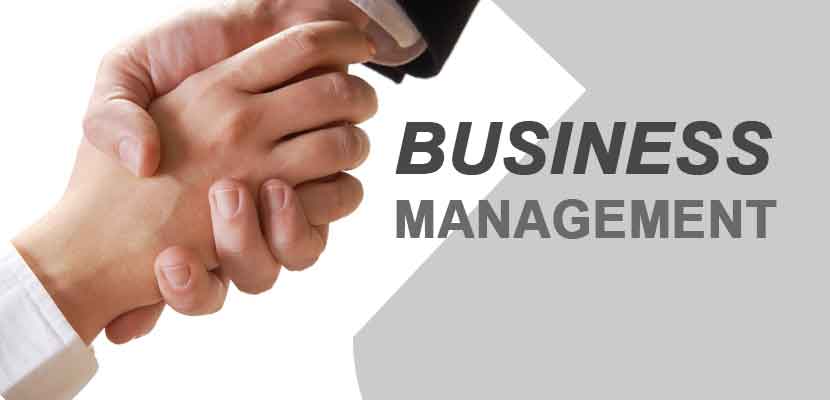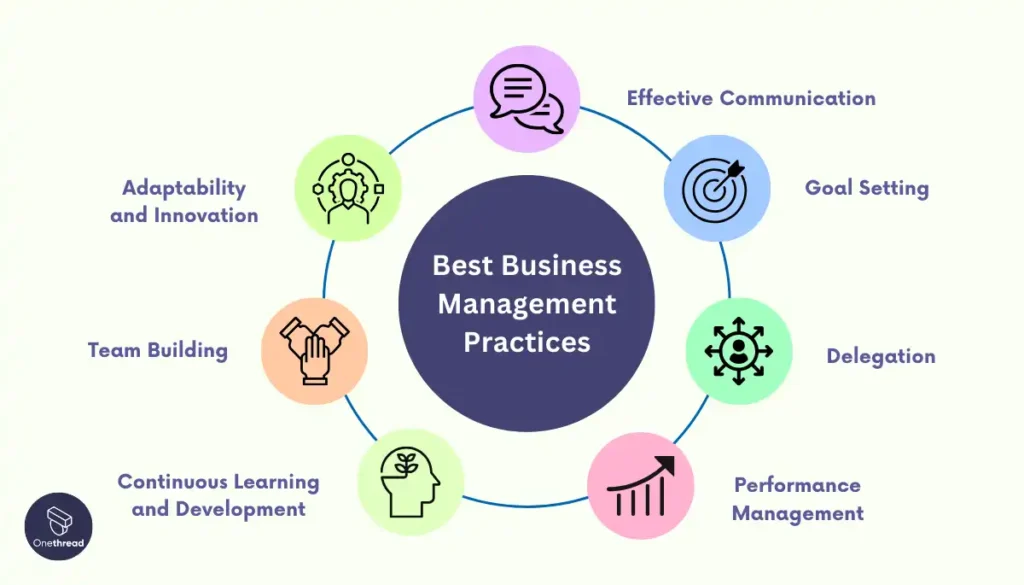Discover the Benefits of SAFe For Architects in Large-Scale Agile Environments
Wiki Article
SAFe Qualification: Equipping Leaders in Scaled Agile Frameworks
The landscape of project monitoring is developing, and SAFe Qualification stands as an essential element for leaders looking for to apply the Scaled Agile Framework efficiently. The trip to ending up being an accredited SAFe leader entails even more than simply getting knowledge; it incorporates understanding the nuanced roles and obligations within active settings.Recognizing SAFe Qualification
SAFe qualification, which means Scaled Agile Framework accreditation, is a credentialing program made to gear up experts with the knowledge and skills necessary to carry out agile methods at scale within their organizations. The SAFe framework offers an organized method that helps organizations straighten their teams and manage larger projects successfully, ensuring that dexterous methodologies are used consistently throughout various levels.The certification encompasses numerous duties, consisting of SAFe Agilist, SAFe Professional, and SAFe Program Expert, each concentrating on various facets of the framework. The program stresses the relevance of lean principles, continual shipment, and partnership amongst groups, fostering an environment helpful to technology and effectiveness.
Participants go through rigorous training that integrates theoretical knowledge with functional application, improving their capability to lead dexterous transformations. The educational program consists of topics such as agile teams, program implementation, and portfolio administration, guaranteeing that licensed experts are fluent in all facets of the SAFe methodology.
Benefits of SAFe Accreditation
Obtaining a Risk-free qualification uses many benefits for experts wanting to enhance their professions in dexterous project monitoring. Most importantly, it furnishes individuals with a comprehensive understanding of the Scaled Agile Framework, enabling them to properly implement agile principles throughout huge organizations. This knowledge is critical as services significantly embrace dexterous techniques to improve efficiency and adaptability.Additionally, SAFe accreditation improves a candidate's marketability and career prospects. As companies seek qualified specialists to lead their agile changes, certified people can regulate greater wages and stand apart in a competitive work market. Additionally, obtaining this certification shows a commitment to continuous discovering and specialist growth, which is extremely related to by employers. SAFe For Architects.
Networking chances additionally occur from SAFe qualification, connecting individuals with a neighborhood of like-minded specialists and industry leaders. This can lead to mentorship, collaboration, and knowledge sharing, further enriching one's professional experience.
Lastly, accredited professionals are frequently better outfitted to promote a culture of cooperation and innovation within their groups, driving effective outcomes in nimble tasks. Overall, the benefits of SAFe qualification are manifold, making it a beneficial investment for those in the dexterous job administration domain name.
The Accreditation Process
The trip to accomplishing SAFe qualification entails a structured procedure made to make sure candidates are well-prepared for active management duties. This process typically starts with picking the proper SAFe accreditation that straightens with one's job goals and business demands, such as SAFe Agilist, SAFe Practitioner, or SAFe Program Expert.Candidates are then motivated to join a comprehensive training program, typically carried out by a certified SAFe instructor - SAFe DevOps certification. These courses cover vital concepts, principles, and methods of the Scaled Agile Structure, providing participants with important insights and functional understanding
Following the training, candidates should pass an accreditation exam to demonstrate their understanding and skills in using SAFe concepts. The examinations are made to examine not just understanding yet additionally the ability to execute agile practices successfully within a scaled environment.
When certified, individuals get accessibility to a riches of resources, including area networks and recurring discovering chances, which better boost their agile leadership capacities. Maintaining accreditation requires continual professional advancement, ensuring that leaders stay present with advancing techniques within the framework. Ultimately, the qualification procedure is a rigorous yet rewarding path for those aiming to master active leadership.
Roles and Duties
Reliable application of the Scaled Agile Framework (SAFe) counts heavily on plainly defined duties and obligations within an organization. These duties are essential for guaranteeing placement, effectiveness, and effective partnership across groups.At the group level, key functions consist of the Scrum Master, Product Owner, and Agile Team Members. The Scrum Master helps with the nimble procedure, making sure that the group sticks to the SAFe principles while removing impediments. The Item Owner is accountable for optimizing the value of the item and managing the backlog to align with organization goals. Agile Team Members contribute their specialized abilities to supply premium increments.
At the program degree, the Release Train Engineer (RTE) plays a crucial role in orchestrating the Agile Launch Train (ART), guaranteeing smooth program execution and positioning throughout several teams. Additionally, the system engineer and business owners supply technological advice and calculated vision, respectively.
Constant Improvement in SAFe
Continual improvement is a keystone of the Scaled Agile Framework (SAFe), driving companies to enhance their procedures, items, and general performance. By cultivating a society of continuous improvement, SAFe motivates groups to routinely evaluate their end results and operations, determine ineffectiveness, and carry out approaches for improvement. This iterative process not only enhances efficiency however also lines up teams with the company's calculated purposes.Central to this method are the Inspect and Adapt (I&A) workshops, which supply structured opportunities for representation and discovering. During these sessions, teams analyze efficiency metrics, review difficulties, and produce actionable insights to guide future versions. Furthermore, the use of Agile Release Trains (ARTs) promotes cross-functional collaboration, enabling groups to share finest practices and drive cumulative improvement.
Additionally, Lean-Agile management plays a critical role in advertising a way of thinking of continual enhancement. Leaders are entrusted with cultivating an atmosphere where testing is motivated, and failures are considered as finding out opportunities. By embedding continual improvement into the business culture, SAFe empowers teams to continue to be dexterous and responsive to altering market demands, inevitably enhancing their capacity to deliver value to consumers.

Conclusion
In conclusion, SAFe Qualification serves as an essential tool for leaders aiming to carry out active techniques effectively within their companies. Ultimately, SAFe Qualification adds significantly to business success and strength.The landscape of project management is developing, and SAFe Certification stands as a critical aspect for leaders looking for to execute the Scaled Agile Framework properly.Obtaining a SAFe qualification uses many advantages for experts looking to enhance their professions in dexterous task monitoring. The Scrum Master promotes the dexterous procedure, making certain that the group sticks to the SAFe principles while removing impediments. By embedding constant renovation right into the business society, SAFe equips teams to stay responsive and agile to changing market demands, ultimately enhancing their capacity to provide value to customers.

|
Master Agile Practices Through Comprehensive SAFe Accreditation
In a progressively complex company landscape, understanding Dexterous techniques via extensive SAFe certification has actually become an important proficiency for specialists intending to boost business performance. This accreditation not only supplies a deep understanding of the SAFe structure yet likewise cultivates crucial skills for fostering partnership and placement amongst teams. As organizations look for to browse the obstacles of fast modification, the implementation of Secure concepts uses a pathway to improved end results. The trip to accreditation entails more than simply theoretical understanding; it requires a tactical strategy to application that can significantly impact company dexterity. Leading SAFe. What does this entail?Understanding SAFe Framework

At its core, the SAFe framework makes up four levels: Group, Program, Large Option, and Portfolio. Each level addresses certain facets of Active distribution, from handling little groups of programmers to managing several programs and aligning strategic efforts with organization purposes.
SAFe motivates collaboration among cross-functional groups, cultivating an atmosphere where continual renovation and innovation are extremely important. By stressing positioning, transparency, and integrated quality, the framework equips organizations to respond swiftly to market adjustments while providing worth to consumers.
In addition, SAFe supports different methods, such as Scrum and Kanban, allowing organizations to customize their technique according to particular project demands. This flexibility makes SAFe a durable structure for companies intending to grow in a swiftly developing company landscape.
Benefits of SAFe Qualification
Regularly demanded in the Agile neighborhood, Secure accreditation uses many benefits for organizations and professionals alike. Among the primary advantages is the enhancement of abilities and understanding in implementing the Scaled Agile Structure (SAFe), which furnishes individuals with the devices required to drive effective Agile changes. This certification indicates a dedication to expert advancement, making candidates much more affordable in the task market.For organizations, having certified professionals cultivates a culture of constant renovation and collaboration, important for adjusting to altering market demands. It enables teams to straighten their deal with strategic goals, ultimately enhancing efficiency and efficiency. Companies with a higher percentage of SAFe-certified employees often experience minimized time-to-market and increased high quality of deliverables.
Furthermore, Secure certification helps with networking opportunities with other Agile professionals, allowing the exchange of ideal practices and experiences (SAFe Lean Portfolio Management). This collaborative network can significantly contribute to business and personal growth. In summary, obtaining Risk-free accreditation not only enhances private capabilities yet also reinforces the total Agile maturity of an organization, leading to lasting success in today's dynamic company atmosphere
Secret Elements of SAFe
Building on the advantages of Secure certification, comprehending the vital elements of the Scaled Agile Framework is crucial for effectively executing its principles. The Risk-free structure makes up four main levels: Team, Program, Large Service, and Portfolio. Each level addresses various facets of agile practices, assisting in placement and shipment across the company.At the Team degree, cross-functional groups function collaboratively using Agile methodologies, such as Scrum or Kanban, to provide step-by-step worth. The Program level focuses on the Agile Launch Train (ART), which is a long-lived group of Agile teams that plans, commits, and executes with each other. The Big Option level addresses complicated options that need multiple ARTs to work in concert, making certain control and integration.
Planning For SAFe Accreditation
Getting ready for Secure certification requires a critical method to make sure an extensive understanding of the structure. Initially, familiarize on your own with the core principles and worths of the Scaled Agile Framework (Risk-free) Recommended Reading Review resources given on the Scaled Agile site, consisting of the Risk-free structure documents, situation studies, and whitepapers, to construct a solid foundation.Following, take into consideration enrolling in a main Secure training program. These courses, led by accredited SAFe Program Experts (SPCs), deal structured learning experiences that cover important principles and functional applications. Engaging with teachers and peers can enhance your understanding of the material.
Additionally, experiment sample exam inquiries to acquaint yourself with the style and types of questions you might run into. Joining research groups or forums can facilitate understanding exchange and supply assistance from fellow prospects.
Applying SAFe in Organizations
Executing the Scaled Agile Framework (Risk-free) within organizations demands a structured strategy that aligns teams and processes toward an usual goal. The effective application of SAFe begins with developing a clear understanding of its principles, consisting of positioning, transparency, and collaboration. Organizations should initially assess their existing processes and identify locations for improvement, ensuring they are prepared for the cultural change that SAFe requires.Following, leadership dedication is vital. Management has to actively sustain the change by promoting a society of continual discovering and adaptability. Training and accreditation for groups help furnish members with the needed abilities and understanding to run efficiently within the Secure structure. This consists of developing Agile Launch Trains (ARTs), which offer as the backbone for providing worth throughout the company.
Normal planning sessions, such as Program Increment (PI) planning, must be carried out to integrate teams and focus on job. In addition, leveraging metrics to gauge development and performance is crucial for recurring enhancement. By regularly using Risk-free concepts and methods, organizations can attain greater agility, improve collaboration, and eventually drive far better business outcomes. Embracing this structure placements organizations to respond promptly to market modifications and customer needs.

Conclusion
In conclusion, mastering Active techniques via comprehensive SAFe certification significantly contributes and enhances professional capacities to organizational performance. The understanding got from understanding the SAFe structure, along with its key elements, improves and facilitates successful improvements cooperation amongst groups.The SAFe (Scaled Agile Structure) framework serves as an organized strategy for applying Active methods at scale across huge companies. One of the primary benefits is the enhancement of skills and expertise in executing the Scaled Agile Framework (Secure), which gears up people with the tools required to drive successful Agile transformations. In recap, obtaining SAFe certification not only enhances specific abilities but also reinforces the overall Agile maturity of an organization, leading to lasting success in today's vibrant business atmosphere.
Structure on the benefits of Risk-free accreditation, recognizing the key elements of the Scaled Agile Framework is important for effectively implementing its concepts.Executing the Scaled Agile Structure (Risk-free) within companies requires an organized technique that aligns teams and procedures towards a typical objective.
|
Breakthrough Your Job With SAFE Qualification: Agile Expertise Unlocked
In today's rapidly progressing organization landscape, getting Risk-free qualification can substantially improve your job trajectory by furnishing you with necessary nimble know-how. As firms increasingly look for professionals who can lead dexterous improvements, comprehending the paths to acquire this accreditation becomes essential.Recognizing SAFe Accreditation
SAFe Accreditation acts as a critical credentials for professionals seeking to enhance their careers in active job monitoring. Created by Scaled Agile, Inc., the Scaled Agile Structure (Risk-free) gives a detailed technique to executing dexterous practices across big companies, making it necessary for specialists aiming to browse intricate job environments effectively.The qualification procedure includes various degrees, including SAFe Agilist, SAFe Expert, and SAFe Program Expert, each targeting different functions within active groups. These qualifications are created to equip experts with the understanding and tools essential to lead agile transformations, foster partnership throughout teams, and boost project distribution results.
Recognizing Risk-free Accreditation involves identifying its focus on lining up approach with implementation, promoting a society of continuous renovation, and leveraging active concepts at range. This structure not just boosts private proficiencies but additionally adds to business agility, allowing businesses to respond swiftly to market modifications and customer needs.
Accomplishing Risk-free Qualification represents a commitment to expert development and a strong structure in nimble techniques, positioning individuals as beneficial assets in their companies. By welcoming this qualification, professionals can boost their capability, guaranteeing they stay affordable in a swiftly developing work market.
Advantages of SAFe Qualification
Acquiring SAFe Qualification uses various benefits for professionals in the nimble job administration sector. This qualification not only enhances private qualifications yet additionally demonstrates a commitment to understanding the Scaled Agile Structure, which is progressively recognized by employers. With a Risk-free qualification, experts can confirm their expertise and skills in agile techniques, making them more competitive in the job market.One of the essential advantages is the capacity to lead active changes within companies. Licensed individuals are geared up with the devices and methods necessary to execute and scale nimble techniques successfully, driving performance and performance. Furthermore, companies with SAFe-trained specialists usually experience boosted placement throughout teams, fostering better collaboration and technology.
Furthermore, Secure Accreditation opens up doors to networking possibilities within the nimble area. Professionals can connect with like-minded people, share finest methods, and stay upgraded on market trends. The qualification likewise gives access to unique sources, consisting of workshops and webinars, which can better boost one's know-how.
Inevitably, obtaining SAFe Accreditation encourages specialists to progress their careers, add meaningfully to their organizations, and lead the fee in active excellence. Leading SAFe.
Pathways to Acquire Certification

To begin, prospects typically take part in a SAFe training program, which works as the foundational action for certification. These training courses are facilitated by SAFe Program Experts (SPCs) and cover important concepts, techniques, and roles within the Secure framework. After finishing the training, candidates must pass a qualification exam to verify their expertise and skills.
There are several accreditations offered, such as SAFe Agilist (SA), Risk-free Practitioner (SP), and Secure Scrum Master (SSM), to name a few. Each accreditation requires specific training sessions and exams, allowing experts to pick a path that lines up with their profession objectives.
Furthermore, preserving SAFe certification necessitates ongoing education and revival, ensuring that specialists remain current with developing Agile techniques. By strategically picking the appropriate training and accreditation paths, people can substantially enhance their experience and profession trajectory within the Agile landscape.
Real-World Applications of SAFe
Implementing the SAFe framework in organizations has proven to be highly efficient in enhancing performance and positioning across teams. This approach helps with partnership amongst numerous departments, permitting groups to work in the direction of a merged set of goals. By breaking down silos and cultivating interaction, SAFe makes it possible for companies to react quickly to market changes and customer needs.
Moreover, SAFe contributes in boosting task presence with metrics and reporting tools, allowing stakeholders to make informed choices. It also urges a society of continual enhancement, promoting normal retrospectives and adaptation of practices. Inevitably, the real-world applications of Secure demonstrate its adaptability and effectiveness in driving effective here are the findings end results throughout numerous industries, making it an essential framework for modern-day companies.
Profession Development Opportunities
The fostering of the Risk-free framework not just improves organizational efficiency but likewise opens up considerable career advancement possibilities for experts within the Agile and project monitoring areas. As organizations increasingly embrace Agile techniques, the need for SAFe-certified experts proceeds to rise, creating a competitive edge for those furnished with this qualification.SAFe qualification supplies experts access to a variety of duties, consisting of Agile Launch Train (ART) duties, Scrum Masters, and Launch Train Engineers. Furthermore, individuals can shift right into leadership positions such as Program Managers or Portfolio Managers, thus increasing their duties click site and influence within the organization. The certification also shows a commitment to continuous learning and flexibility, high qualities very valued by companies.
Furthermore, experts with SAFe qualification typically enjoy greater earning capacity. Sector records indicate that certified individuals normally regulate wages that surpass those of their non-certified peers. The networking possibilities afforded by Risk-free neighborhoods can lead to valuable links and occupation prospects.
Conclusion
In final thought, obtaining Secure certification substantially enhances specialist credentials in the world of dexterous methodologies. This accreditation not only facilitates proficiency of nimble practices however additionally promotes opportunities for career improvement throughout various functions, consisting of Scrum Masters and Program Supervisors. By gearing up people with important abilities and understanding, Risk-free certification fosters management capabilities necessary for driving effective active changes within organizations, eventually adding to greater earning capacity and valuable links within the dexterous area.Obtaining Risk-free Qualification supplies various benefits for professionals in the nimble job management field. With a Risk-free accreditation, specialists can verify their knowledge and abilities in dexterous methodologies, making them a lot more competitive in the job market.
These courses are assisted in by SAFe Program Professionals (SPCs) and cover essential principles, practices, and duties within the Risk-free framework.In conclusion, obtaining SAFe qualification significantly boosts expert qualifications in the world of nimble approaches. By equipping people with vital skills and understanding, Secure certification fosters management capabilities required for driving successful nimble changes within organizations, ultimately adding to higher earning capacity and valuable links within the active community.
} Report this wiki page